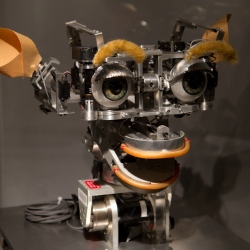
Researchers at the Georgia Institute of Technology, in Atlanta, Georgia have developed a few robots that deceive each other. Why? We’ll get to that later.
How? By transferring the deceptive behavioral patterns of squirrels and birds into the small mobile robots. In other words, the research team developed algorithms that allow a robot to determine if it should deceive a human or other intelligent machine and techniques to help the robot select the best deceptive strategy and reduce its chance of being discovered.
All of this goes directly back to nature and the deceit that’s inherent in some patterns of animal behavior, specifically squirrels and birds. Professor Ronald Arkin, a Regents Professor at the School of Interactive Computing at Georgia Tech, and his team reviewed biological research results from squirrels showing how they gather acorns and store them in specific locations. Then, they patrol their hidden stashes, routinely going back and forth to check on them. When another squirrel shows up, the hoarding squirrel changes its behavior and instead of checking on the true location of its hidden stash, it visits empty stash sites, trying to deceive his competition.
